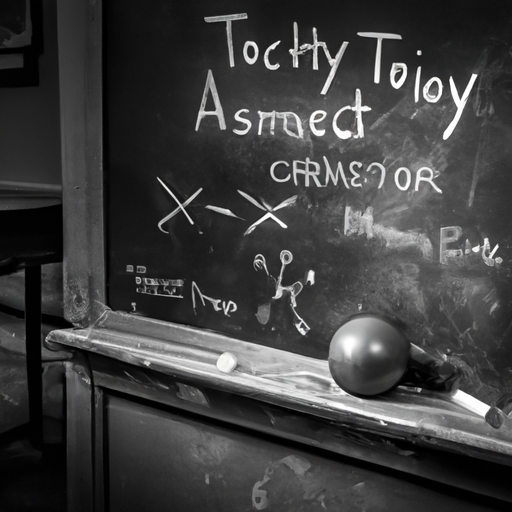The Origins of Atomic Science: Exploring the First Atomic Theory
Atomic science has come a long way since its inception, but have you ever wondered about the first atomic theory? In this article, we will delve into the origins of atomic science and shed light on the groundbreaking theories that paved the way for our modern understanding of atoms.
What was the first atomic theory?
The first atomic theory can be traced back to the ancient Greeks. Around 400 BCE, a philosopher named Democritus proposed that all matter is composed of tiny, indivisible particles called “atoms.” He believed that atoms were eternal, unchangeable, and varied in size and shape. Democritus’ theory laid the foundation for the concept of atoms, although it was purely philosophical and lacked experimental evidence.
John Dalton and the Modern Atomic Theory
Fast forward to the early 19th century when John Dalton, an English chemist, revolutionized atomic theory. Dalton’s atomic theory, proposed in 1803, provided a more scientific approach to understanding atoms. His theory stated that:
- All matter is composed of small, indivisible particles called atoms.
- Atoms of the same element are identical in size, shape, and mass.
- Atoms of different elements can combine to form compounds in fixed ratios.
- Chemical reactions involve the rearrangement of atoms.
Dalton’s atomic theory was based on experimental evidence and laid the groundwork for further advancements in atomic science.
Development of the Atomic Model
As scientific knowledge expanded, so did our understanding of atoms. In the early 20th century, scientists such as J.J. Thomson, Ernest Rutherford, and Niels Bohr made significant contributions to the development of the atomic model.
J.J. Thomson’s experiments with cathode rays led to the discovery of electrons, subatomic particles with a negative charge. This discovery challenged Dalton’s theory of indivisible atoms and led to the development of the “plum pudding” model, where electrons were embedded in a positively charged sphere.
Ernest Rutherford’s famous gold foil experiment in 1911 provided evidence for the existence of a dense, positively charged nucleus at the center of an atom. This led to the development of the nuclear model, where electrons orbit the nucleus like planets around the sun.
Niels Bohr expanded on Rutherford’s model and proposed that electrons occupy specific energy levels or shells around the nucleus. His model explained the stability of atoms and the emission and absorption of light during electron transitions.
Conclusion
From Democritus’ philosophical musings to Dalton’s scientific breakthrough and the subsequent development of the atomic model, the first atomic theory has evolved significantly over time. Our understanding of atoms and their behavior has been shaped by the contributions of numerous scientists throughout history. Today, atomic science continues to advance, leading to new discoveries and applications in various fields.
So, the next time you ponder the nature of matter, remember the journey that began with the first atomic theory and appreciate the remarkable progress we have made in unraveling the mysteries of the atomic world.




